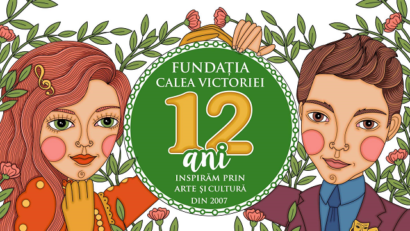The Inaugural Edition of the National Film Festival for the Visually Impair
An unprecedented initiative in Romania

Ana-Maria Cononovici, 14.06.2015, 14:00
Ten older and more recent Romanian films were screened at the inaugural edition of the National Film Festival for the Visually Impaired. Mounted in Bucharest over May 15 and 19, the festival allowed the visually impaired but also anybody interested in such an experience, the opportunity to watch a string of notable productions. The films presented at the festival were Radu Judes Aferim, Radu Munteans Tuesday After Christmas, The White Gate by Nicolae Margineanu, Vali Hoteas Roxanne, Medal of Honor and Childs Pose, both productions by Calin Peter Netzer, Over the Hills, by Cristian Mungiu, Tudor Giurgius Of Snails and Men, Iulia Ruginas Love Building and America Here We Come, by Razvan Savescu.
The Elvira Popescu Cinema Theater and the Romanian Peasant Museums Cinema Hall both hosted the festival, and the screenings were supported by audio description. The headsets handed in at the entrance were similar to those used for simultaneous interpretation. The festival was organized by the ‘Traveling Book Foundation in cooperation with the Romanian Film Promotion Association. Project manager and representative of the ‘Traveling Book Foundation Gabriela Dima told us more about the festival.
Films accompanied by audio description have been on offer in Romania since 2007 and have been very well received by the visually impaired audience and not only. And that, because each year, starting 2009, at the Transylvania International Film festival each year weve had audio described screenings. But just one such screening per year is not enough, so we thought a much better promotion of such productions was needed, precisely because they have been very well received, both by the public at large – because it is very important for regular people to be aware of the fact that movies are also for the visually impaired – and then by the people involved in the filmmaking industry: producers, directors, film distributors, cinema theaters. And that because whenever they make a film, they should take into account the accessibility of that production right from the start, instead of making things easier afterwards. So, the idea is that when a film is made available on the market, the option for an audio description should also exist. That is why we thought a film festival tailored for the visually impaired, held in Bucharest, could enjoy a better promotion, could have a greater impact, nation-wide, so we decided to mount such a festival.
Romanian movie producers were delighted when they heard of the project, based on the idea that life does not end when one loses ones sight, and one can continue to enjoy all the arts. Gabriela Dima, the manager of the project, is back with details:
“The Romanian film festival has two reasons: cinema is having a good run, and people had a good response to our request to make movies more accessible. It was enough to make a phone call or send an e-mail and we got a positive response, and we didnt have to write too many contracts. We are just beginning, and for foreign movies it would have been additional work to secure licensing rights. We decided to have only Romanian movies at the first edition, also because we want to work primarily with the Romanian industry.
The spoken description of the movies makes them accessible to both the visually impaired and people with poor eyesight. To the movie score they add a tape with additional explanation for understanding what is happening on the screen. Gabriela Dima explains:
“Between the actors lines they insert elements such as facial expressions, gestures, sets, costumes, the relationships between the characters, any information that may lead to a better understanding of the movie. Because emotions are derived from sets, shadows, lighting, the director tries to use all of these to build the movie, and we have to show all of this with the audio description. I admit that complex scenes without spoken lines are the hardest to describe. I can give you an example: for the last minute of the movie Poarta Alba, it took 45 minutes of study. We watched that minute for almost an hour to manage to convey what the director wanted: to make the connection with the opening of the movie, to tie the story together at the end. This is what description is, the description appears only in the breaks between the actors lines, which is the reason for which in fact these screenings are for everyone.
People who had seen a given movie told our interlocutor that they got a lot of things that they had missed the first time when they heard the description. Here is Gabriela Dima again:
“We have improved accessibility for the film “Aferim, both because it was launched later, but we also wanted very much to have it in the festival. There is a scene there where the protagonist is tortured. And you have a tendency, when you describe it, because of the sound, to suppose that the people watching the movie, the villagers, have the same emotions as you do. We realized that we were very much bothered by the noise, the screams of the man under torture, reason for which we turned off the sound, and we watched only the picture, and saw the faces: those people, back in 1835, saw torture as a common spectacle, there was not a trace of compassion on their faces. If you hadnt had that audio description, you would have supposed that they feel what you feel, which is totally wrong. Here is where the audio description provides added value.
The first edition of the festival did not grant awards, but starting next year, organizers want to initiate a competition between producers of movies with improved accessibility.






























